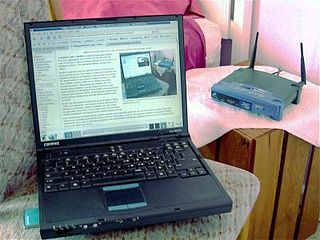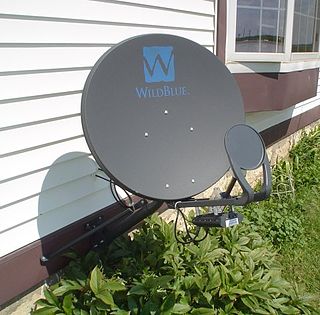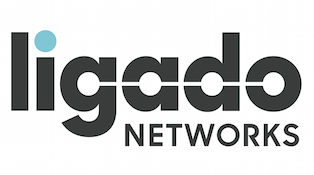Ancillary Terrestrial Component (ATC) is a U.S. Federal Communications Commission-approved [1] technique for using a "terrestrial" network of cell-phone towers to supplement a Mobile Satellite Service (MSS) provided by orbiting communications satellites. Satellite communications can be degraded by various factors, including attenuation in urban areas due to buildings etc. ATC allows the operators to reuse the same satellite spectrum in a terrestrial network to increase coverage and performance for their customers in highly shadowed regions e.g. within houses. In Europe ATC is known as complementary ground component (CGC).

The Global Positioning System (GPS), originally Navstar GPS, is a satellite-based radio navigation system owned by the United States Space Force and operated by Mission Delta 31. It is one of the global navigation satellite systems (GNSS) that provide geolocation and time information to a GPS receiver anywhere on or near the Earth where there is an unobstructed line of sight to four or more GPS satellites. It does not require the user to transmit any data, and operates independently of any telephone or Internet reception, though these technologies can enhance the usefulness of the GPS positioning information. It provides critical positioning capabilities to military, civil, and commercial users around the world. Although the United States government created, controls, and maintains the GPS system, it is freely accessible to anyone with a GPS receiver.

A wireless network is a computer network that uses wireless data connections between network nodes. Wireless networking allows homes, telecommunications networks, and business installations to avoid the costly process of introducing cables into a building, or as a connection between various equipment locations. Admin telecommunications networks are generally implemented and administered using radio communication. This implementation takes place at the physical level (layer) of the OSI model network structure.
In a telecommunications network, a link is a communication channel that connects two or more devices for the purpose of data transmission. The link may be a dedicated physical link or a virtual circuit that uses one or more physical links or shares a physical link with other telecommunications links.
ATC may refer to:

The S band is a designation by the Institute of Electrical and Electronics Engineers (IEEE) for a part of the microwave band of the electromagnetic spectrum covering frequencies from 2 to 4 gigahertz (GHz). Thus it crosses the conventional boundary between the UHF and SHF bands at 3.0 GHz. The S band is used by airport surveillance radar for air traffic control, weather radar, surface ship radar, and some communications satellites, particularly satellites used by NASA to communicate with the Space Shuttle and the International Space Station. The 10 cm radar short-band ranges roughly from 1.55 to 5.2 GHz. India's regional satellite navigation network (IRNSS) broadcasts on 2.483778 to 2.500278 GHz.
The V band ("vee-band") is a standard designation by the Institute of Electrical and Electronics Engineers (IEEE) for a band of frequencies in the microwave portion of the electromagnetic spectrum ranging from 40 to 75 gigahertz (GHz). The V band is not heavily used, except for millimeter wave radar research and other kinds of scientific research. It should not be confused with the 600–1,000 MHz range of Band V of the UHF frequency range.

A satellite telephone, satellite phone or satphone is a type of mobile phone that connects to other phones or the telephone network by radio link through satellites orbiting the Earth instead of terrestrial cell sites, as cellphones do. Therefore, they can work in most geographic locations on the Earth's surface, as long as open sky and the line-of-sight between the phone and the satellite are provided. Depending on the architecture of a particular system, coverage may include the entire Earth or only specific regions. Satellite phones provide similar functionality to terrestrial mobile telephones; voice calling, text messaging, and low-bandwidth Internet access are supported through most systems. The advantage of a satellite phone is that it can be used in such regions where local terrestrial communication infrastructures, such as landline and cellular networks, are not available.

Satellite Internet access is Internet access provided through communication satellites; if it can sustain high speeds, it is termed satellite broadband. Modern consumer grade satellite Internet service is typically provided to individual users through geostationary satellites that can offer relatively high data speeds, with newer satellites using the Ku band to achieve downstream data speeds up to 506 Mbit/s. In addition, new satellite internet constellations are being developed in low-earth orbit to enable low-latency internet access from space.

Electronic news gathering (ENG) or electronic journalism (EJ) is usage of electronic video and audio technologies by reporters to gather and present news instead of using film cameras. The term was coined during the rise of videotape technology in the 1970s. ENG can involve anything from a single reporter with a single professional video camera, to an entire television crew taking a truck on location.
Datacasting is the transmission of data over a wide area using radio waves. It typically refers to supplemental information sent by television stations alongside digital terrestrial television (DTT) signals. However, datacasting can also be applied to digital data signals carried on analog TV or radio broadcasts.
Pendrell Corporation is an intellectual property (IP) investment, advisory services and asset management firm. The company develops and implements strategies to acquire, commercialize, manage, divest and license IP. The company, formerly ICO Global Communications, is based in Kirkland, Washington.

Satcom, a portmanteau of satellite communications, was a brand of artificial geo-stationary communications satellites originally developed and operated by RCA American Communications that facilitated wide-area telecommunications by receiving radio signals from Earth, amplifying them, and relaying them back down to terrestrial receivers.
ACeS was a regional satellite telecommunications company based in Jakarta, Indonesia. It offered GSM-like satellite telephony services to Asian market. The coverage area included Indonesia, Malaysia, Thailand, Philippines, Sri Lanka, Vietnam, China and India. The company operated the Garuda 1 satellite, launched on February 12, 2000. A second satellite was planned but never materialized. ACeS was formed by a joint venture of PT. Pasifik Satelit Nusantara (PSN), Lockheed Martin Global Telecommunication (LMGT), Jasmine International Overseas Ltd of Thailand and Philippine Long Distance Telephone Co. (PLDT). ACeS services were marketed by National Service Providers (NSPs) in six countries; PT. Pasifik Satelit Nusantara in Indonesia, ACeS Regional Services in Thailand, Smart ACeS in the Philippines, TMTouch/Celcom in Malaysia, AVCO in Nepal and Mobitel in Sri Lanka.
The Lockheed Martin Solar and Astrophysics Laboratory (LMSAL) is part of the Lockheed Martin Advanced Technology Center (ATC) that is known primarily for its scientific work in the field of solar physics, astronomy and space weather. The LMSAL team is part of Lockheed Martin Space Systems and has close affiliations with NASA and the solar physics group at Stanford University.
The Future Air Navigation System (FANS) is an avionics system which provides direct data link communication between the pilot and the air traffic controller. The communications include air traffic control clearances, pilot requests and position reporting. In the FANS-B equipped Airbus A320 family aircraft, an Air Traffic Services Unit (ATSU) and a VHF Data Link radio (VDR3) in the avionics rack and two data link control and display units (DCDUs) in the cockpit enable the flight crew to read and answer the controller–pilot data link communications (CPDLC) messages received from the ground.
DVB-SH is a physical layer standard for delivering IP based media content and data to handheld terminals such as mobile phones or PDAs, based on a hybrid satellite/terrestrial downlink and for example a GPRS uplink. The DVB Project published the DVB-SH standard in February 2007.
SkyTerra (SKYT), formerly Mobile Satellite Ventures, was a Reston, Virginia company that developed telecommunications systems that integrate satellite and terrestrial radio communication technologies into one system. In March 2010, the company was acquired by Harbinger Capital Partners and under the leadership of CEO Sanjiv Ahuja became part of a new company called LightSquared. The company placed its first satellite, SkyTerra-1, in orbit on November 14, 2010. LightSquared has since then went bankrupt and emerged from bankruptcy as Ligado Networks.
Television is the most popular medium in Russia, with 74% of the population watching national television channels routinely and 59% routinely watching regional channels. There are 6,700 television channels in total. Before going digital television, 3 channels have a nationwide outreach : Channel One, Russia-1 and NTV.
FANS-1/A design is a range of Future Air Navigation System (FANS) products that allows aircraft to be seen by ATC in areas where radar is not practical so that aircraft separation can be maintained. FANS includes many components from human to avionics hardware and a dedicated network linking Air Traffic Control (ATC) to the flight crew via satellite and landlines. FANS 1/A consists of CPDLC and ADS-C. CPDLC allows communications between the pilot and ATC and ADS-C is an electronic contract, valid through the duration of time the aircraft is in FANS 1/A airspace, offered by ATC and accepted by the flight crew. ADS-C provides aircraft position information to ATC including heading, altitude, airspeed and position. The communications include air traffic control clearances, pilot requests, and position reporting. FANS-1 is Boeing's solution and FANS-A is the Airbus solution.

Ligado Networks, formerly known as LightSquared, is an American satellite communications company.